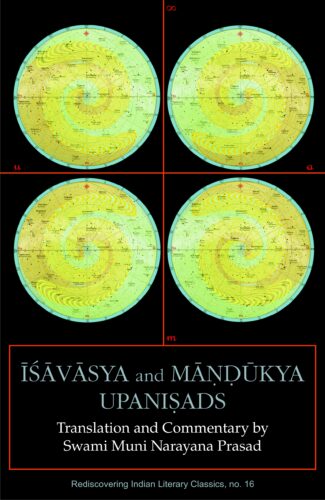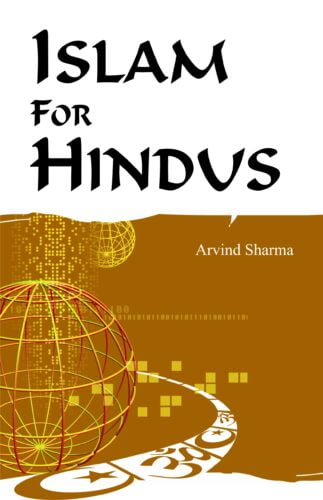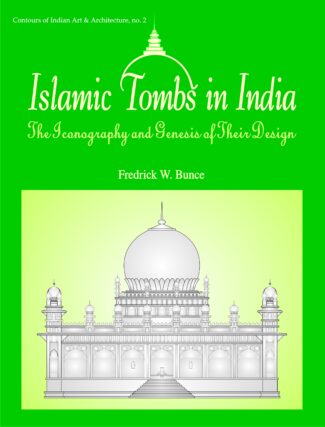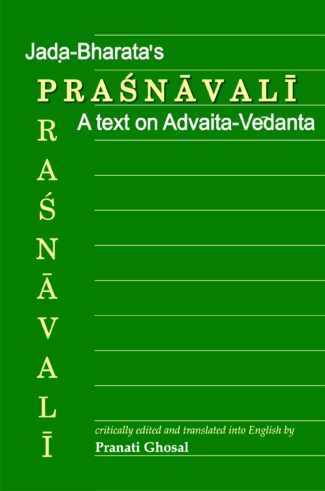Showing 131–140 of 384 results

The book is an analytical study of the philosophy of Sri Aurobindo with special reference to his ideas on socio-political issues, nationalism, morality and stateless society besides the dangers of imposed uniformity with disregard for difference.
The book is an in-depth study of the integral philosophy of Sri Aurobindo. It throws light on his fundamental ideas on socio-political issues and concepts relating to Yoga and knowledge. The well researched writings pointedly examine Sri Aurobindos views on nationalism, Western imperialism, morality, stateless society, human relations and education among other such subjects. Quoting liberally from Sri Aurobindo the volume delves deep into his understanding of the divine and the human; the nation as characterized by spirituality; and spiritual transformation relying on the brotherhood of all humans as multiple expressions of the same godhead. His philosophy of integral monism and the way Aurobindo makes frequent references to Hindu scriptures: the Vedas, the Upanishads and the Puranas has been highlighted in particular. How Sri Aurobindo stresses throughout on the dangers of imposed uniformity with total disregard for difference has been brought into focus.
Based on an analytical study of Sri Aurobindos philosophy and offering fresh approaches, the volume will interest both, the students and scholars of modern Indian philosophy and Indology in general.

This innovative reading of Patanjalis Yoga-sutras discuss how Yoga enables one to live more fully in the world without being enslaved by worldly identification. It challenges misperception about Yoga and argues for a fresh understanding of the practical relevance of Yoga.
The Integrity of the Yoga Darshana centres on the thought of Patanjali, the great exponent of the authoritative and Classical Yoga school of Hinduism and the reputed author of the Yoga-sutras. In this textual, historical, and interpretive study, whicher offers a plausible and innovative reading of the intention of the Yoga-sutras, namely that Yoga does not advocate the abandonment or condemnation of the world, but rather supports a stance that enables one to live more fully in the world without being enslaved by worldly identification. Challenging and correcting misperceptions about Yoga drawn by traditional and modern interpretations of the Yoga-sutras, the author argues for a fresh vision of the spiritual potential present in this seminal text, thereby contributing to our understanding of the meaning and practical relevance of Yoga and its reception today. A superb piece of work, this book provides an original, constructive, and insightful interpretation of the Yoga system.

The book contains the original texts in Sanskrit, Roman transliteration and detailed commentaries on the Ishavasya and Mandukya Upanishads, explaining the basic message of the Upanishads Þ Brahmavidya or the science of the Absolute Þ in different ways, the questions asked in each being different.
The volume contains a detailed commentary on two important Upanishads, the Ishavasya and the Mandukya.
The Isha Upanishad states straightaway what Brahmavidya is. It clarifies three different paths in human life: two leading to final liberation and unconditioned happiness and the third leading to the demonic world of darkness and sufferings in life.
The Mandukya Upanishad, which is also the shortest Upanishad, states concisely what Vedanta basically teaches (Everything here indeed is Brahman), how everything is to be conceived, and how it is to be equated with aum. It explains how the monosyllable aum condenses within itself Brahman or atman, the substance in all the worlds.
The volume gives the original texts of the Upanishads in Sanskrit, their Roman transliteration and a commentary for each. It explains the basic message of the Upanishads Brahmavidya or Atmavidya or Vedanta or the science of the Absolute in different ways, the questions asked in each being different. It takes a fresh look at the Upanishads keeping in view all modern developments of thought in science as well as philosophy. The work will interest scholars and students of Hindu philosophy and religion.

The book discusses the fundamental beliefs and practices of Islam with a view to enabling people of other religions to study the principles of Islam and to understand the similarities and differences between religions.
The book discusses the fundamental beliefs and practices of Islam with a view to enabling people of other religions to study the principles of Islam and to understand the similarities and differences between religions. In simple language, it deals with the concept of a prophet, the life of Prophet Muhammad, the contents of the holy text of the Muslims, the Qur’an, the Pillars of Islam, the history of Islam and practice of Islamic law. Along with the political, legal and social framework of Islam, it explores facets of Islamic mysticism Sufism by examining its major features like asceticism, love of God and knowledge of God. It finally looks into the basis for a dialogue between the Hindus and Muslims by delving into Quran’ic verses that stress plurality and the universality of diversity. The work will prove ample material for thought for the reader in general.

The book surveys Islamic thought and movements in the Indian subcontinent with particular emphasis on the thoughts and activities of the leading twentieth-century thinkers, Mawlana Mawdudi and Mawlana Nadwi. It analyses the challenges they faced and their endeavours towards revival and reform of Islam.
The book surveys Islamic thought and movements in the subcontinent in the modern times, emphasising on the thoughts and activities of two leading Islamic thinkers of the twentieth century, Mawlana Mawdudi and Mawlana Nadwi. It discusses the sources of evolution of Islamic thought and the early reformative endeavours. It reveals that their responses to the modern challenges contributed to the revitalisation of Islamic thought in their own perspectives. In the context of revival and reform of Islam, they found their interpretation of Islam as essential for an appreciation of the religion’s dynamism and diversity. The book discusses their holistic approach towards Islam as a comprehensive guide for private as well as public life. It explains how they viewed the plight of the Muslim community as something that had to be addressed by sharpening the Muslims consciousness of the dynamic characteristics of their faith and its ability to halt the temporary state of decline. For the purpose, Mawdudi focused on the systematic presentation of Islam. It examines his formation of Jamaat-I-Islami and its role in rebuilding the Islamic State of Pakistan. It explains Mawlana Nadwi’s tradition and Sufistic approach to religion, showcasing his views and response relating to the Muslim Personal Law Board, Babri Masjid demolition, the Palestine issue and the West. The book will interest Islamic scholars and all those interested in evolution of Islamic philosophy in modern times.

The book studies the architecture and iconography of some 36 Islamic tombs belonging to the period ad 1230 to 1754. Abounding in line drawings, it makes examines the monuments size, plan and elevation, the techniques of their construction, masonry and artisanship, and the relevance of each monument in the overall scheme of Indo-Islamic architectural development.
The work by an Indological scholar who has studied different architectural traditions of the world covers the architecture and iconography of some 36 Islamic tombs in India spanning a period of over 500 years from c. ad 1230 to 1754. It begins with a brief historical background to the Islamic rule in northern India and a discussion on burial practices and tomb types of the time to further understanding of the underlying concept of construction and functions of the tombs. Abounding in numerous line drawings of plans and elevations, and figures, it examines the influence of different traditions Buddhist and Hindu as well as other Asian and African and Mediterranean traditions on evolution of the form of Islamic tombs. It makes a detailed examination of the Indo-Islamic tombs under consideration: their description, size, plan and elevation including the interior space and application of the mandala patterns over the tomb structures, the techniques of construction, masonry and artisanship employed in them. It explains the place and relevance of each monument in the overall scheme of Indo-Islamic architectural development and growth as well as the importance of each by itself. It delves into the religious, philosophical and mathematical bases of the architecture and its application to tomb-building. The research also involves a comparative study of Indo-Islamic tombs vis-a-vis other architectural marvels of the world Islamic and non-Islamic. The book will be extremely relevant to scholars and students of Indian, particularly Indo-Islamic, iconography and those interested in Indo-Islamic cultural traditions in general.

Professor Filippi explores the Indian view of mortal existence from an individuals conception to his/her journey to the Kingdom of Yama with rare scientific objectivity by unveiling a complex network of sentiments, beliefs, scriptural references, customs, etc.
Prasnavali, a less-known yet important treatise, ascribed to Jadabharata, poses fifty-two fundamental questions on Monistic Philosophy. Novelty of this book lies in its question-answer technique provided for both teaching and propagation of Advaita Vedànta in an easy way. In spite of being small in size, the work covers almost all the important topics expected to be known by a devotee or a learner. There may be different groups of scholars and students of Vedanta affiliated to various mathas who long for finding proper answers to the queries that arise in this field from time to time. Jadabharata earnestly took up this uphill task through this treatise. Thus he deserves a special credit for creating interest in Advaitism among the people belonging to the community of both the learners and devotees.

History of Jainism has been divided into three parts Jain history and its origin; its historic importance; and Jain religion during the interim periods all covered in detail. Jainism during Mogul rule its Social and Economic condition, has also been described.
History of Jainism has been presented here in three parts. The first part tries to prove through the archaeological and literary sources the historicity of Tirthamkara, Parsvanatha and Mahavira, explaining their life and education besides religious, political, social, artistic and literary conditions of their times. The second part surveys the history of the Jaina dharma, its expansion and significance. The effects of Jaina dharma increased when Mauryas were ruling Magadha and Kharawelas ruled Orissa. No doubt, the period from the 9th to 12th centuries ce was a golden time in the history of Jainism and even traders, labourers and craftsmen were highly influenced by it during Kusana period. Seen geographically, Cauhana, Paramara and Calukya were acting as watchmen for Jainism in the north and in the south it was being nourished by Calukya, Rastrakuta and Ganga (Kingdoms). Many Jaina temples were constructed, monuments erected in honour of their deities. This part illustrates the many ways in which Jainism was served by the Jaina monks, saints, scholars and the politicians and answers questions such as: What kind of religious and social unions were made after the division and what were their traditional characteristics? How were the different leagues and monastries of Jaina sages made? What was the lineage of various castes and how they originated? The third part, associated with the middle ages of Jainism, describes that even though there was Muslim rule, still many organizations were sponsored with the influence of Jainism. Truthfully, there was a decline in Jainism during the middle ages but it remained protected. Many pilgrimages and historical places were established with the great influence of Jainism. Dr A.H. Nizami has written here about the Muslim reign, conditions of Jainism and also about the admirable Jainas. Dr Surendra Gopal has described the social and financial conditions prevailing at this period. Dr Shyam Sunder Nigam has penned on the middle ages of India and Dr Prakash Chandra Jain has written about the Jaina religion in the Middle Ages in Malwa region. This monumental work will be a treat for the minds and eyes of people curious about Jainism.

History of Jainism has been divided into three parts Jain history and its origin; its historic importance; and Jain religion during the interim periods all covered in detail. Jainism during Mogul rule its Social and Economic condition, has also been described.
History of Jainism has been presented here in three parts. The first part tries to prove through the archaeological and literary sources the historicity of Tirthamkara, Parsvanatha and Mahavira, explaining their life and education besides religious, political, social, artistic and literary conditions of their times. The second part surveys the history of the Jaina dharma, its expansion and significance. The effects of Jaina dharma increased when Mauryas were ruling Magadha and Kharawelas ruled Orissa. No doubt, the period from the 9th to 12th centuries ce was a golden time in the history of Jainism and even traders, labourers and craftsmen were highly influenced by it during Kusana period. Seen geographically, Cauhana, Paramara and Calukya were acting as watchmen for Jainism in the north and in the south it was being nourished by Calukya, Rastrakuta and Ganga (Kingdoms). Many Jaina temples were constructed, monuments erected in honour of their deities. This part illustrates the many ways in which Jainism was served by the Jaina monks, saints, scholars and the politicians and answers questions such as: What kind of religious and social unions were made after the division and what were their traditional characteristics? How were the different leagues and monastries of Jaina sages made? What was the lineage of various castes and how they originated? The third part, associated with the middle ages of Jainism, describes that even though there was Muslim rule, still many organizations were sponsored with the influence of Jainism. Truthfully, there was a decline in Jainism during the middle ages but it remained protected. Many pilgrimages and historical places were established with the great influence of Jainism. Dr A.H. Nizami has written here about the Muslim reign, conditions of Jainism and also about the admirable Jainas. Dr Surendra Gopal has described the social and financial conditions prevailing at this period. Dr Shyam Sunder Nigam has penned on the middle ages of India and Dr Prakash Chandra Jain has written about the Jaina religion in the Middle Ages in Malwa region. This monumental work will be a treat for the minds and eyes of people curious about Jainism.

History of Jainism has been divided into three parts Jain history and its origin; its historic importance; and Jain religion during the interim periods all covered in detail. Jainism during Mogul rule its Social and Economic condition, has also been described.
History of Jainism has been presented here in three parts. The first part tries to prove through the archaeological and literary sources the historicity of Tirthamkara, Parsvanatha and Mahavira, explaining their life and education besides religious, political, social, artistic and literary conditions of their times. The second part surveys the history of the Jaina dharma, its expansion and significance. The effects of Jaina dharma increased when Mauryas were ruling Magadha and Kharawelas ruled Orissa. No doubt, the period from the 9th to 12th centuries ce was a golden time in the history of Jainism and even traders, labourers and craftsmen were highly influenced by it during Kusana period. Seen geographically, Cauhana, Paramara and Calukya were acting as watchmen for Jainism in the north and in the south it was being nourished by Calukya, Rastrakuta and Ganga (Kingdoms). Many Jaina temples were constructed, monuments erected in honour of their deities. This part illustrates the many ways in which Jainism was served by the Jaina monks, saints, scholars and the politicians and answers questions such as: What kind of religious and social unions were made after the division and what were their traditional characteristics? How were the different leagues and monastries of Jaina sages made? What was the lineage of various castes and how they originated? The third part, associated with the middle ages of Jainism, describes that even though there was Muslim rule, still many organizations were sponsored with the influence of Jainism. Truthfully, there was a decline in Jainism during the middle ages but it remained protected. Many pilgrimages and historical places were established with the great influence of Jainism. Dr A.H. Nizami has written here about the Muslim reign, conditions of Jainism and also about the admirable Jainas. Dr Surendra Gopal has described the social and financial conditions prevailing at this period. Dr Shyam Sunder Nigam has penned on the middle ages of India and Dr Prakash Chandra Jain has written about the Jaina religion in the Middle Ages in Malwa region. This monumental work will be a treat for the minds and eyes of people curious about Jainism.
| There are no products |